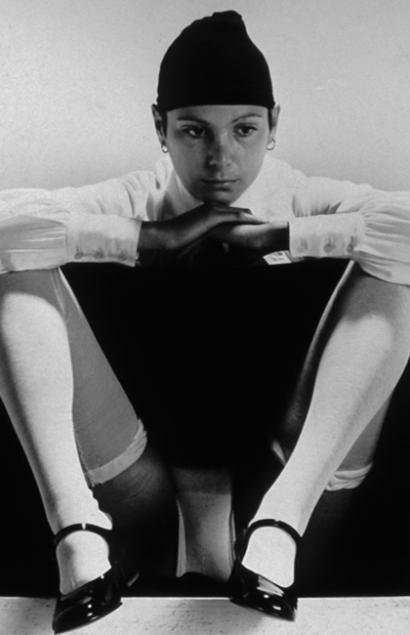From June 19 to September 23, 2012, the Royal Palace host an exclusive and quite extraordinary exhibition: Fabio Mauri. THE END. The exhibition - curated by Francesca Alfano Miglietti and produced by the City of Milan - Culture Fashion Design Department, has collected for the first time the most important works by Fabio Mauri: installations, performance objects, works, emotions and visions of the artist where ideology is made into an art material.
The project, developed against the evocative background of a highly symbolic building for the city, moves along different thematic flows converging into a single, coherent whole: it consists of a first path, more intimate, devoted to a collection of unpublished drawings, a second path, unexpected and undisguised, with the most important installations by Fabio Mauri, and a last one that collects a rich selection of 'Screens', the first monochrome paintings the artist made in the late Fifties that already contain references to cinema and to the central importance of image in contemporary society.
Artist and playwright, founder of two cultural critique journals and leading representative of the Italian avant-garde since the Fifties, Mauri weaves history and individual destiny in a poetry that develops in his first eighteen years through a stunning range of life vicissitudes: war, conversion, madness, the tragedy of his Jewish friends who never returned, the discovery of what fascism really meant
"The kind of perspective required by Fabio Mauri’s works" writes Francesca Alfano Miglietti in the exhibition catalogue "is a sort of en voyeur gaze (inevitable counterpart of pietas). We are simply asked to observe, to identify and, at the same time, to keep the distance. The strong discomfort ensuing is connected to a feeling of absence, out of place. There is a close resemblance, in German, between the verbs vorfuhren ("to show", "to project") and ver-fuhren ("to seduce"): the common trait in both of them is fuhren, which means "to drive." The artistic work gradually disappears. "Seeing" and "showing", are constant in the poetics of Fabio Mauri, as well as the need to make his work accessible in all its parts. The viewer is given the opportunity of reflection, remembrance and emotional involvement."
The Royal Palace will exhibit some of the most rigorous and important works by FABIO MAURI. The tension between artistic expression and gruesome reality evoked in Ebrea (1971), installation inhabited by sculptural objects that simulate a human source - the skin, teeth, bones, hair of Jews died in Nazi death camps – emotionally involves the viewers while guiding them in a direct experience of evil. A state of mind similar to the progressive apprehension generated by the contrasts of Che cos’è il fascismo (What is Fascism) (1971), simulated reconstruction of a "ludi juveniles" ceremony of the fascist era, suspended between the apparent normality of events and the presence of negative signals. Denunciation becomes rather thin and at times ironic in Manipolazione di cultura (Manipulation of Culture) (1976). This critical analysis of ideology draws on the very images it produced and propagandized, in which the icons of the fascist and Nazi era are accompanied by grey areas in the form of monochromatic blacks and captions, that are often tautological, paradoxical, descriptive.
The exhibition features the monumental installation Il muro Occidentale o del Pianto (The Western or the Wailing Wall, (1993), a wall built out of old leather suitcases, of various shapes and sizes, and 4 meters high, originally part of “Ebrea" during the 45th Venice Biennale. The wall is an explicit reference to the Wailing Wall in Jerusalem, the symbol of the division of the world, of exile, people forced to flee.
Fabio Mauri’s formal materials and resources are sober, direct and immediately evoking the sacred. His works are a reflection on art and man, evidence of poetic reflections that have always been at the center of his fascinating work. Installations, videos, documents and photographs of the last thirty years will be exhibited at Palazzo Reale in a journey dedicated to an artist who is considered a teacher for the younger generations: a strongly contemporary author, capable of acting and experiencing multiple forms of expression and making no concessions to mere consent. A powerful and poetic path in which the word 'memory' is not mired in the past, but becomes a warning signal for future possible events.
|


